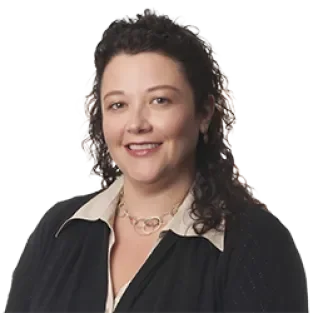ASAP
Local and State Developments Impact San Francisco Paid Parental Leave Obligations
Developments at the local and state level have affected what employers must do to comply with the San Francisco Paid Parental Leave Ordinance (“SF PPLO” or the “Ordinance”).1 The SF PPLO took effect on January 1, 2017 (for employers with 50 or more employees), and the San Francisco Office of Labor Standards Enforcement (“SF OLSE”) has also adopted final rules implementing the SF PPLO,2 published a required form and poster, and issued supplemental compensation calculation instructions. Additionally, the California Employment Development Department (“EDD”) has increased the maximum weekly benefit under the California Paid Family Leave (“CA PFL”) insurance program, which impacts the SF PPLO supplemental compensation amount that must be paid to employees.
CA PFL Benefits & SF PPLO Supplemental Compensation
The CA PFL provides partial wage replacement to employees taking an otherwise approved family leave from work. SF PPLO – as the name suggests – also provides partial wage replacement for situations where an employee takes time away from work for new child bonding and is also receiving CA PFL benefits. For CA PFL claims filed on or after January 1, 2017, the CA PFL maximum weekly benefit increased from $1,129 to $1,173. The increase in weekly CA PFL benefits also increases the maximum weekly supplemental compensation amount provided under SF PPLO from $924 to $960.
Final Rules Implementing the SF PPLO
The final rules adopted by the SF OLSE define certain terms, clarify employer obligations, and cover administrative enforcement and appeals.3 Below we highlight important changes and/or clarifications the final rules make.
180-Day Eligibility Period
In order to trigger the Ordinance’s requirements for a covered employer, an employee must be eligible to receive supplemental compensation. To be eligible for supplemental compensation under the Ordinance, an employee must commence employment with an employer 180 days before the CA PFL benefit period begins. The final rules, however, state that the 180-day period runs from the first day an employee’s CA PFL benefits are payable.4 California currently imposes a seven-day waiting period before employees can begin to receive CA PFL benefits, but this waiting period will be eliminated on January 1, 2018. Because SF PPLO supplemental compensation is meant to supplement CA PFL benefits, it is not surprising the SF OLSE linked the 180-day requirement to the date state benefits are paid. Thus, employers should be aware that any supplemental compensation obligation begins not at the start of the seven-day waiting period, but at the time CA PFL benefits are paid.
Additionally, the final rules address how the 180-day requirement works when employees leave employment but are rehired by the same employer within one year. If the 180-day requirement is met during the initial employment period, employees need not complete a second 180-day employment period upon rehire. If the 180-day requirement is not initially met, time employed in the initial employment period will count toward the 180-day requirement in the subsequent employment period.
Calculating Employer Size
The SF PPLO applies to employers with 50 or more employees on January 1, 2017. It will apply to employers with 35 or more employees on July 1, 2017, and to employers with 20 or more employees on January 1, 2018. The final rules dictate how employer size is determined. Employees working inside and outside San Francisco are counted, regardless of their classification (e.g., seasonal, part-time, placed by staffing company) or whether they are covered employees under the SF PPLO. Employees on paid or unpaid leave (e.g., CFRA, disciplinary suspension, other leave) also are counted. However, if workforce size fluctuates weekly, the number of employees regularly employed is calculated by taking the average number of employees performing paid work for each week (in whole or in part) in the look-back period (usually three months before CA PFL benefits start). All employees within a controlled group of corporations (defined by federal tax law and includes a parent-subsidiary or brother-sister controlled group) are counted.5
For growing businesses, determining their obligations under the SF PPLO may be difficult when an employee begins receiving PFL benefits before the business is a covered SF PPLO employer and continues receiving PFL benefits after coverage is established. Under the final rules, employers must provide supplemental compensation only for the covered leave occurring after they become a covered employer.
Required Poster & Notice
The SF PPLO has both a posting and a notice requirement. The SF OLSE has created the required poster and has adopted rules concerning the notice(s) required by both employees and employers.
To receive supplemental compensation, employees must provide their employers with a completed SF OLSE-created form. The final rules require employers to provide the form: 1) within a reasonable time after employees tell them they are expecting a newborn, adopted, or foster child or after employees receive a CA PFL Notice of Computation; 2) sooner if employees ask about paid parental leave; or 3) if employees take intermittent new child bonding leave and the employer becomes a covered employer between leave periods, the form must be provided before the next SF PPLO-covered intermittent leave period. Additionally, the final rules encourage employers to give the form to each current and new employee, ensure copies are available to them, and distribute the form in other ways.
If 5% of a workplace’s employees speak a language other than English, both the poster and form must be provided in that language. SF OLSE has published the poster in English, Spanish and Chinese. The form is currently available only in English, and the SF OLSE plans create a form in Spanish, Chinese, and Filipino/Tagalog. However, employers must translate the poster and form into other languages, if necessary.
Additionally, if an employee handbook discusses personal or parental leave available to employees, SF PPLO supplemental compensation rights must be described in the next handbook published after December 23, 2016.
SF OLSE Leave Form
As noted above, to receive supplemental compensation, employees must provide employers with a completed SF OLSE form. Along with requiring basic personal information (name, address, and employer name), the form also covers how employers will be notified about CA PFL benefits the employee receives. In addition, the form includes a section requiring employees to agree that, if they voluntarily separate from employment within 90 days of CA PFL leave ending, they will reimburse their employer for supplemental compensation paid if the employer makes a written reimbursement request. Finally, the form also includes a section addressing employees with more than one employer and contains a worksheet detailing wages from all employers.
Employees have two ways to provide employers information about the CA PFL benefits they receive so employers can calculate SF PPLO supplemental compensation. They can either provide an EDD Notice of Computation within a reasonable time6 after it is received or give EDD permission to share with their employer the CA PFL weekly benefit amount. The final rules address timing and payment requirements when either or both options are used. If employees opt only to provide the Notice of Computation, they must notify their employer when their first CA PFL payment is received. Employers can accept notice by phone or other method or they can require a copy of the Notice of Payment (but only if employers inform employees of this requirement within a reasonable time after they are told employees are expecting a newborn, adopted, or foster child). If employees only give EDD permission to share their CA PFL weekly benefit amount with their employer, they must notify their employer when the first CA PFL payment is received. The employer must then contact the state to obtain the CA PFL weekly benefit amount. The SF OLSE recommends in the rules that employers make contact as soon as reasonably practicable. If the EDD does not respond within seven days, the SF OLSE encourages employers to notify employees of the delay and allow them to provide a Notice of Computation instead.
The SF OLSE strongly recommends employees use both options. Importantly for employers, the final rules provide that a delay in paying supplemental compensation to employees who elect to use only one option will not be considered a SF PPLO violation.7
Paying Supplemental Compensation
The final rules also address when supplemental compensation must be paid and how it must be calculated.
If all SF PPLO requirements are met before or during the CA PFL benefits period, employers must make a good-faith effort to issue the first supplemental compensation payment in the next full pay period after requirements are met and then on subsequent, regular paydays. The total supplemental compensation amount owed to an employee must be paid within 30 days after the last day of the employee’s CA PFL period. Alternatively, if SF PPLO requirements are met after the CA PFL period ends, the total supplemental compensation due must be paid within 30 days after requirements were met.8
The SF OLSE’s final rule on calculating supplemental compensation only addresses calculations for tipped employees. However, the SF OLSE separately released four sets of instructions on calculating supplemental compensation when an employee has a single employer or multiple employers, and whether employees do or do not receive tips.
- For non-tipped employees, the calculation is relatively straightforward: Normal Gross Weekly Wages – CA PFL Benefit = SF PPLO Supplemental Compensation. For example, if a highly-compensated employee received the maximum weekly state benefit ($1,173) and normally grosses $2,133 or more per week, supplemental compensation would be $960 per week ($2,133 - $1,173).
- Tipped employee calculations are more complex: (Average Weekly Wages Without Tips / Normal Gross Weekly Wage Including Reported Tips) x (Normal Gross Weekly Wage Including Reported Tips – CA PFL Benefit). For example, SF OLSE states an employee earning $400 per week in wages and $100 per week in reported tips would be owed $180 in weekly supplemental compensation ((400 / 500) x (500 – 275)).
The tipped employee calculation is more complex than the other calculations. Though the SF PPLO itself references gross weekly wages as being based on “earnings from the Covered Employer,” the calculation factors in both wages from the employer and tips, which come from other sources. SF OLSE’s inclusion of tips in this calculation falls in line with the SF OLSE’s very broad definition of gross weekly wages to “include all amounts for labor performed by employees of every description, whether the amount is fixed or ascertained by the standard of time, task, piece, commission basis, or other method of calculation.”
Intermittent Leave
Under CA PFL, eligible employees can receive up to six weeks of benefits during a 12-month period. Employees need not take all six weeks at once. Rather, they can break up leave periods (i.e., take intermittent leave), and receive CA PFL benefits intermittently, as well. For example, eligible employees could take leave in three two-week periods within a 12-month period. The SF PPLO final rules address various issues that arise when CA PFL benefits are received for intermittent leave.
Employee Coverage: During each intermittent CA PFL benefits period, individuals must qualify as covered employees, i.e., be eligible for CA PFL benefits to bond with a new child, begin employment at least 180 days before receiving the first day of CA PFL benefits, work at least eight hours per week in San Francisco, and work at least 40% of their total weekly hours in San Francisco. Employers cannot change employees’ work hours or location during the period when CA PFL benefits are received intermittently to evade their SF PPLO obligations.
Employer Coverage: During each intermittent CA PFL benefits period, businesses must determine whether they are covered employers. A business may be covered for an initial intermittent period, but not covered during later intermittent periods, and vice versa.
Employee Notice Requirement: Depending on applicable law and an employer’s leave policies, an employee may or may not qualify for intermittent leave. If employees do qualify for intermittent leave and plan to also receive CA PFL benefits intermittently, they must notify their employer of the intermittent leave schedule they provided to the state and if their leave schedule changes.
Pay Changes: Employees’ CA PFL benefit amount will not change even if their normal gross weekly wages increase or decrease. Even if wages increase between the initial and later intermittent CA PFL benefits period(s), supplemental compensation is only calculated based on the initial period. That amount is also to be used in all later leave periods during the 12-month CA PFL period. If wages decrease, employers may recalculate supplemental compensation so employees do not receive more than 100% of their current normal gross weekly wages during a later intermittent CA PFL benefits period during the 12-month CA PFL period. Employers may not change employees’ wages during intermittent CA PFL benefits periods for the purpose of reducing their supplemental compensation obligations.
When Less than an Entire Week is Taken Off: SF PPLO supplemental compensation is paid using an average hourly rate. Employers must calculate the hourly rate by dividing the weekly SF PPLO supplemental compensation amount by the average number of hours worked during the look-back period.
Key Takeaways
- The final rules help to guide employers through some of the more complicated issues they will face when applying the law.
- Required posters and forms are available in English and will be available in some other languages soon, but employers may need to translate the posters and forms themselves depending on the languages spoken in a workplace.
- Instructions for calculating SF PPLO supplemental compensation are available to avoid underpaying supplemental compensation.



